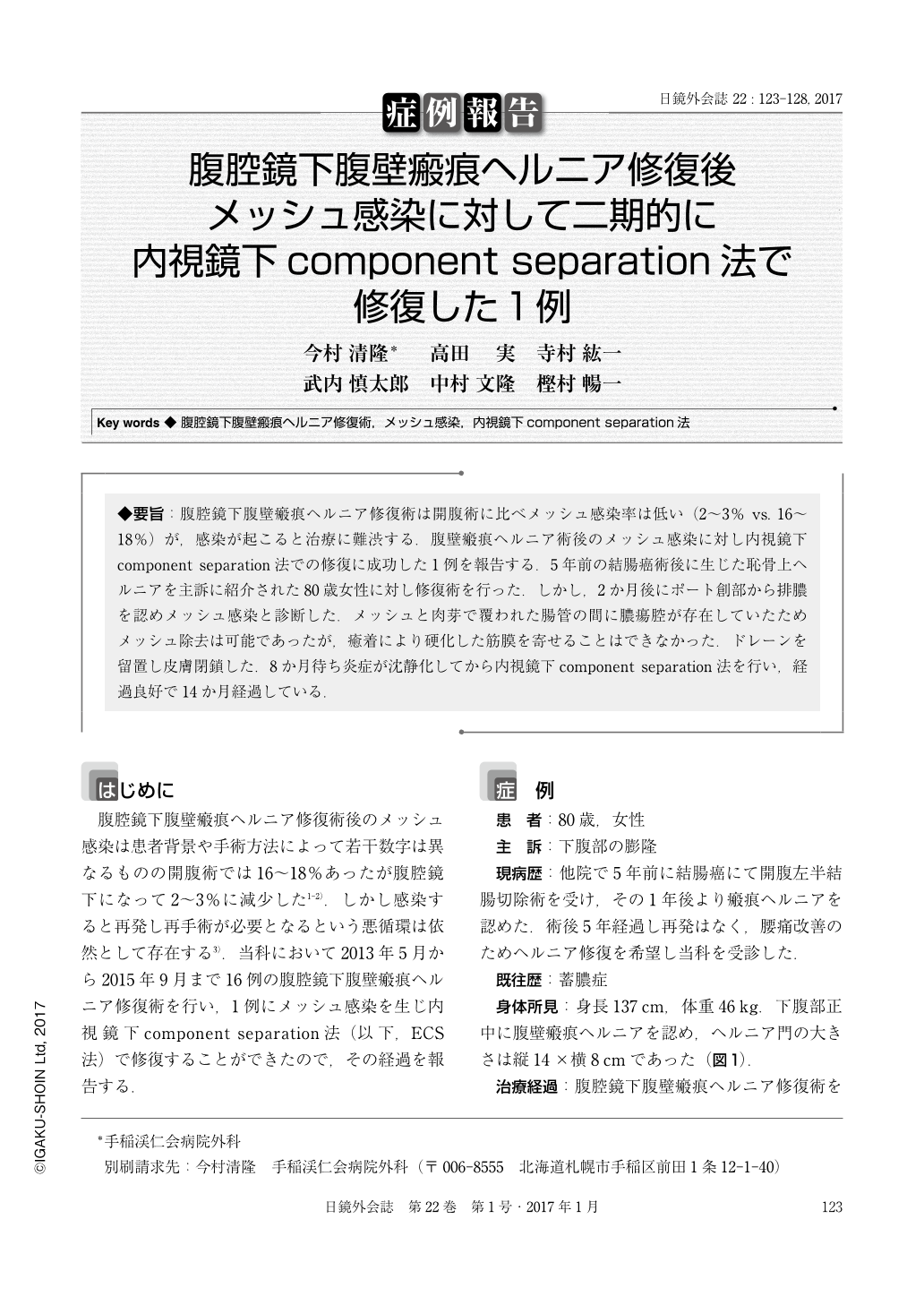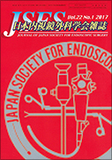Japanese
English
- 有料閲覧
- Abstract 文献概要
- 1ページ目 Look Inside
- 参考文献 Reference
◆要旨:腹腔鏡下腹壁瘢痕ヘルニア修復術は開腹術に比べメッシュ感染率は低い(2〜3% vs. 16〜18%)が,感染が起こると治療に難渋する.腹壁瘢痕ヘルニア術後のメッシュ感染に対し内視鏡下component separation法での修復に成功した1例を報告する.5年前の結腸癌術後に生じた恥骨上ヘルニアを主訴に紹介された80歳女性に対し修復術を行った.しかし,2か月後にポート創部から排膿を認めメッシュ感染と診断した.メッシュと肉芽で覆われた腸管の間に膿瘍腔が存在していたためメッシュ除去は可能であったが,癒着により硬化した筋膜を寄せることはできなかった.ドレーンを留置し皮膚閉鎖した.8か月待ち炎症が沈静化してから内視鏡下component separation法を行い,経過良好で14か月経過している.
Laparoscopic ventral hernia repairs have a significantly lower risk of mesh infection than open repair procedures(2-3% vs. 16-18%). However, if infection develops, further treatment is a challenge. We report a case of a ventral incisional hernia complicated with a mesh infection, which was successfully repaired using an endoscopic component separation technique. An 80-year-old woman was referred to our clinic because of suprapubic incisional hernia that developed after a colectomy, which was performed 5 years before. We performed a laparoscopic ventral hernia repair using a prosthetic mesh. Unfortunately, 2 months later, she noticed a purulent discharge from her scar ; a mesh infection was diagnosed. Although the removal of the mesh was not difficult, we could not approximate the fascia edges because of the firm adhesion that resulted from the abscess between the mesh and intestines. We inserted drainage tubes and performed a temporary skin closure. After 8 months, we felt that the tissue inflammation had subsided sufficiently, and we performed the endoscopic component separation technique. Fourteen months have passed since the last surgery, and no complications have occurred ; the patient is satisfied with the results.

Copyright © 2017, JAPAN SOCIETY FOR ENDOSCOPIC SURGERY All rights reserved.


